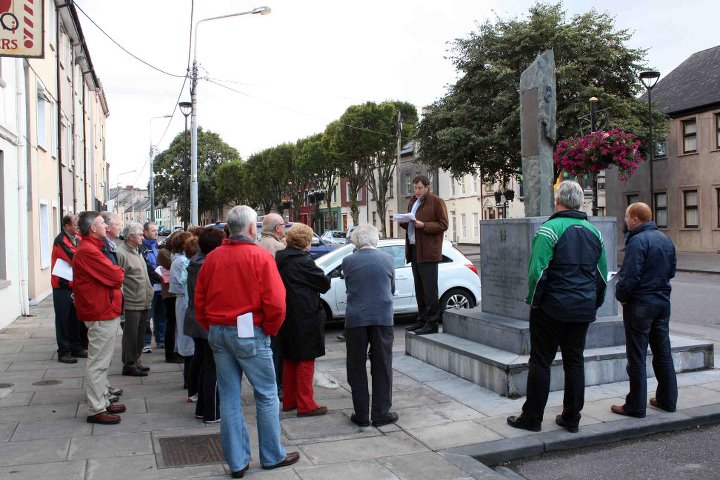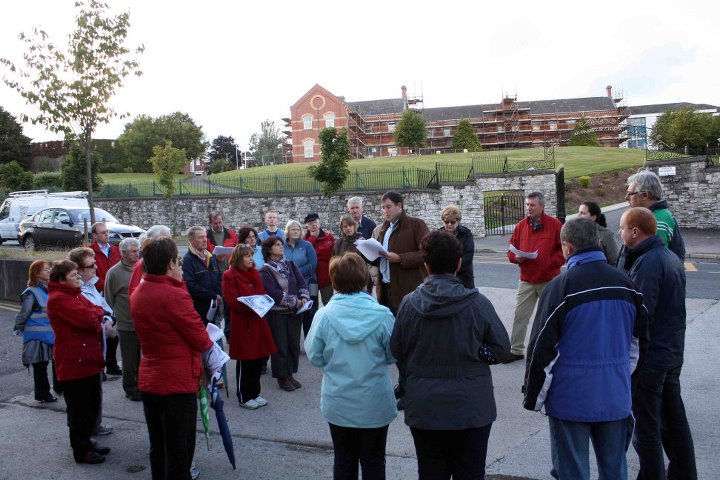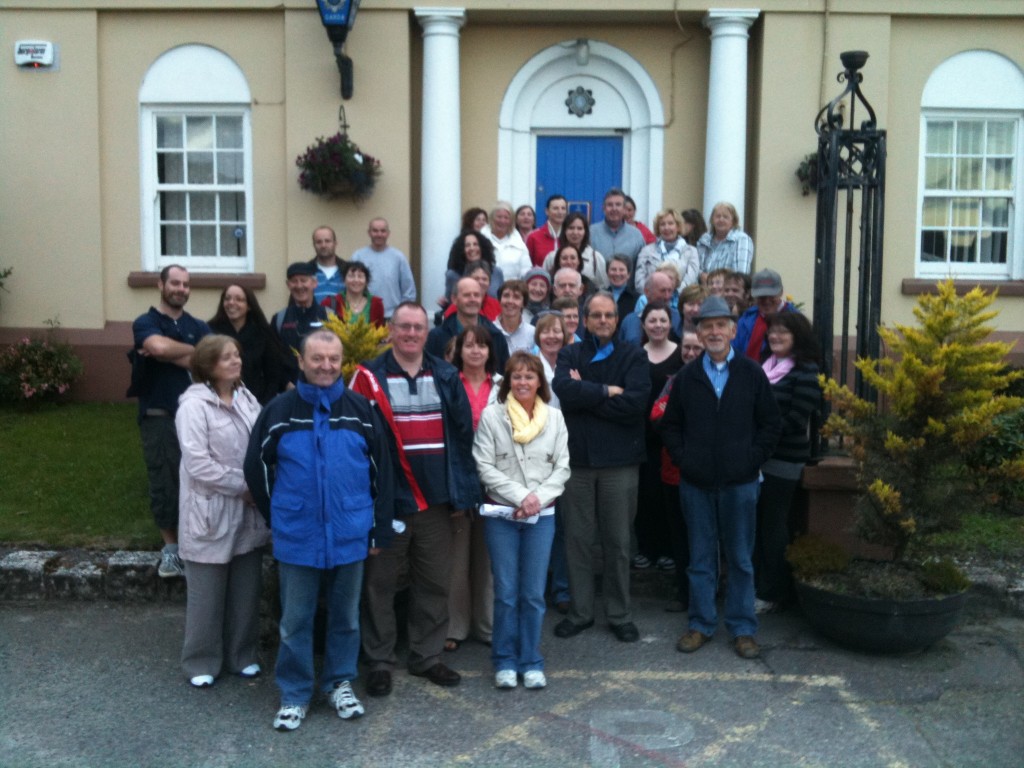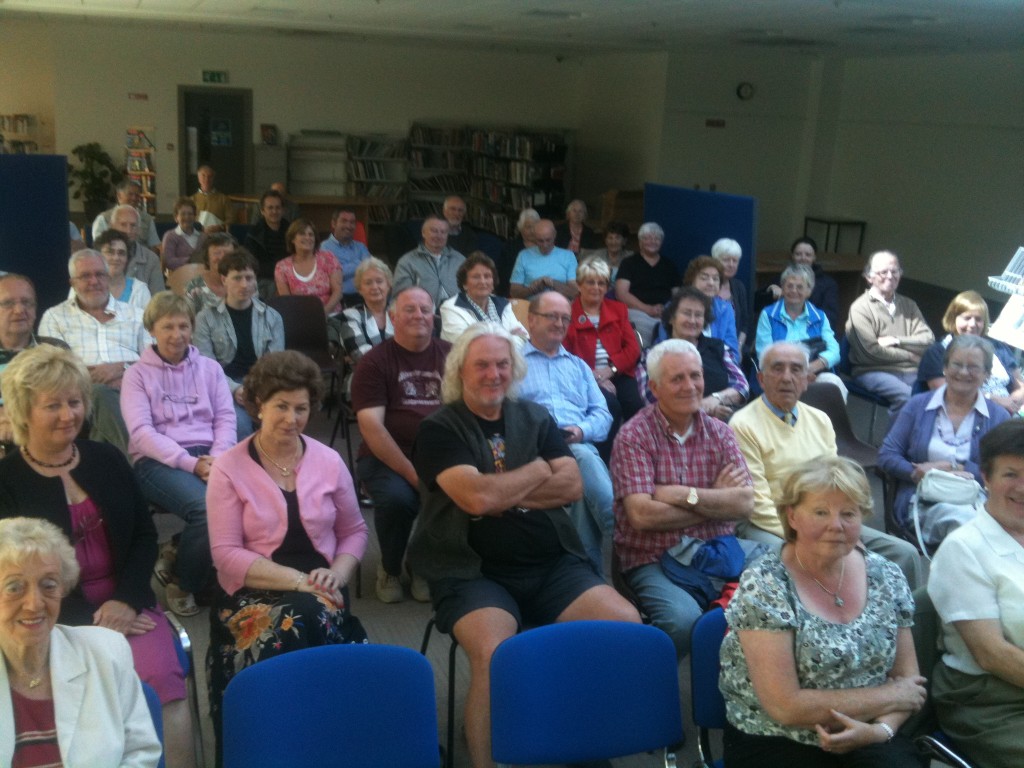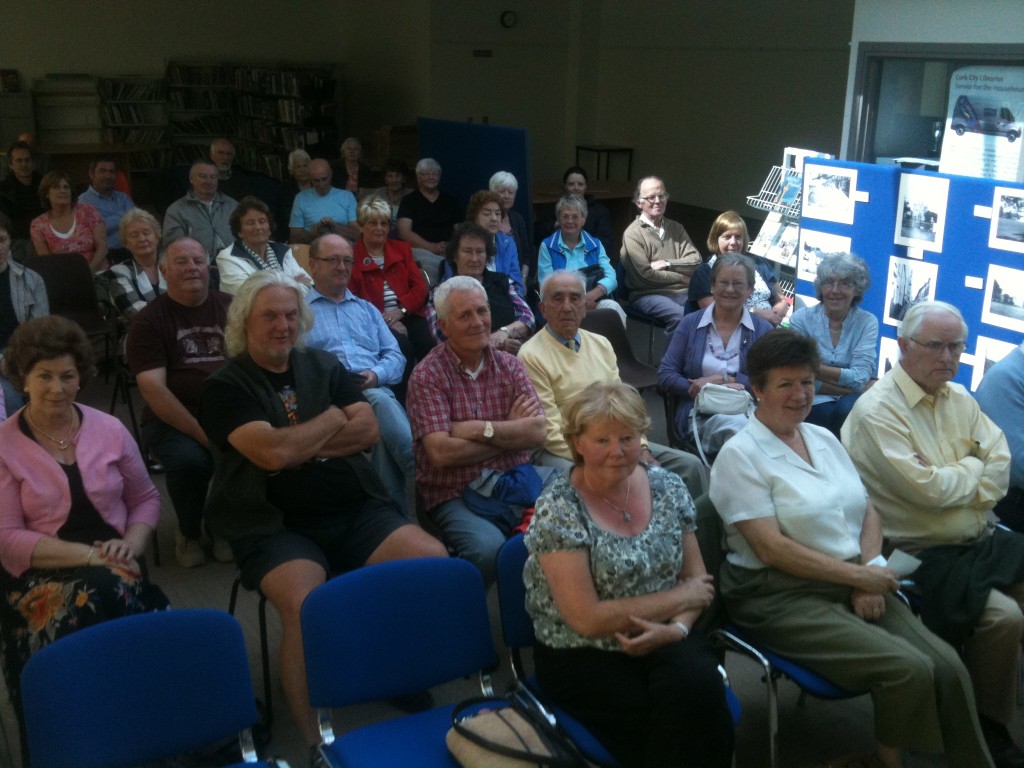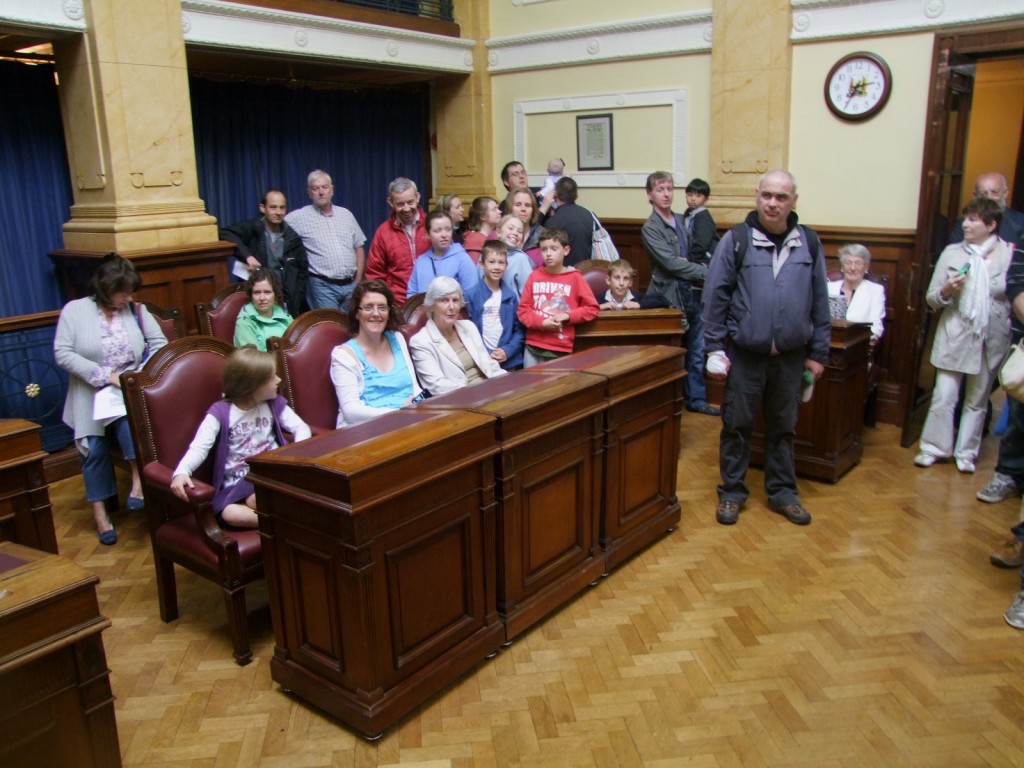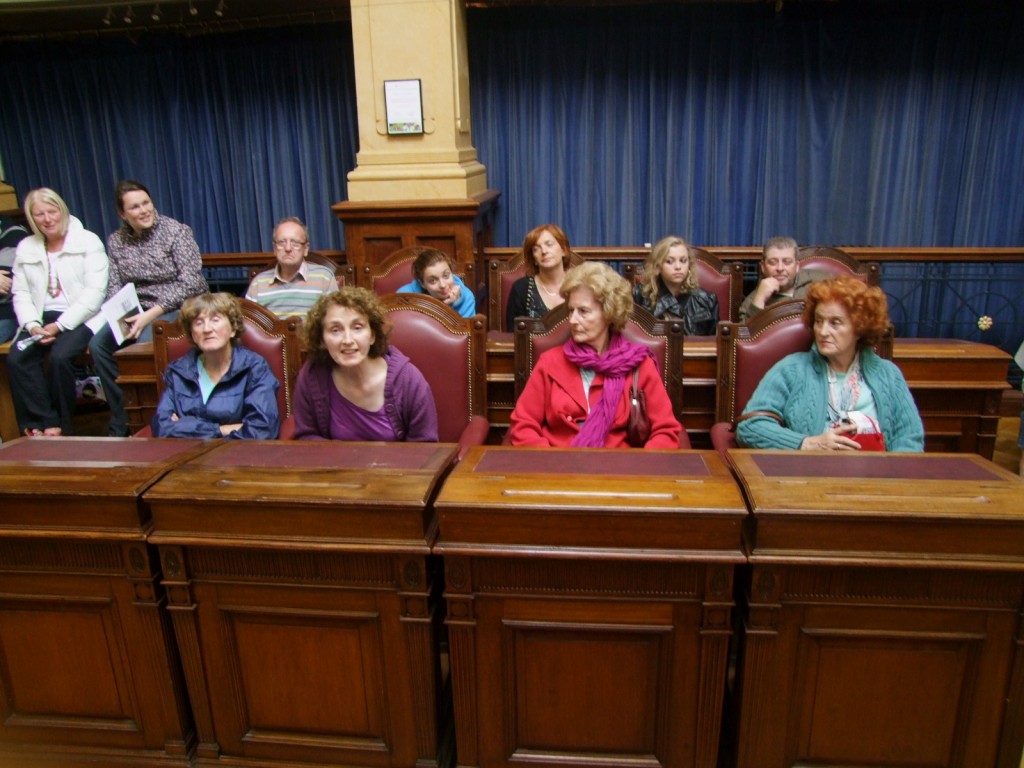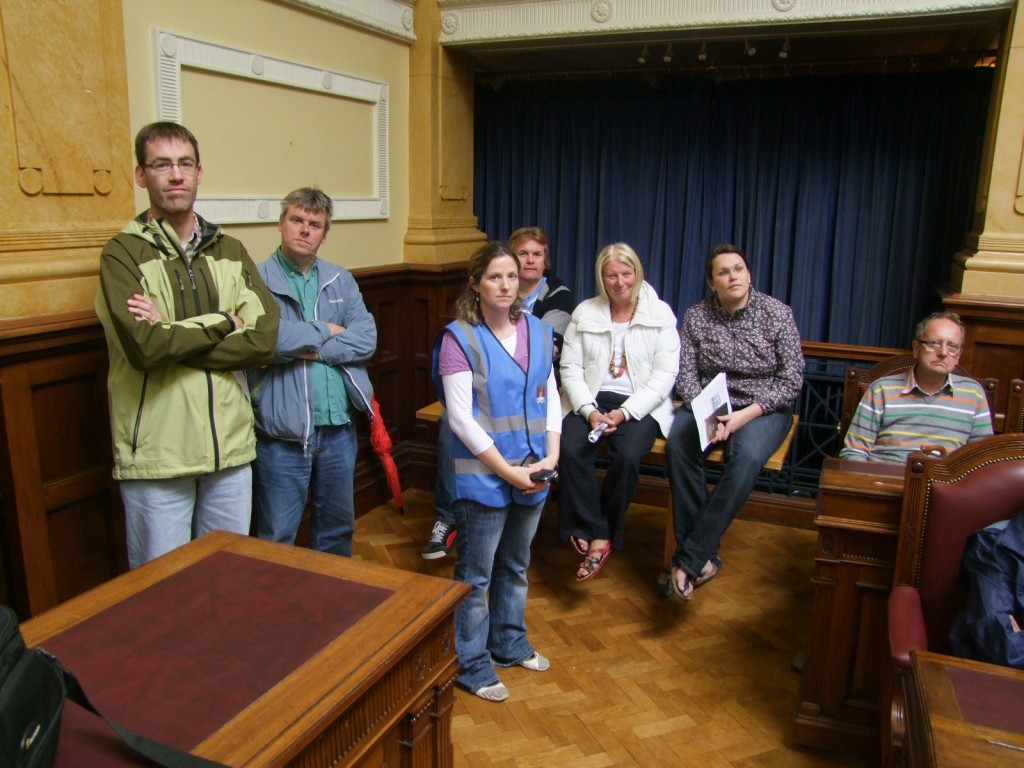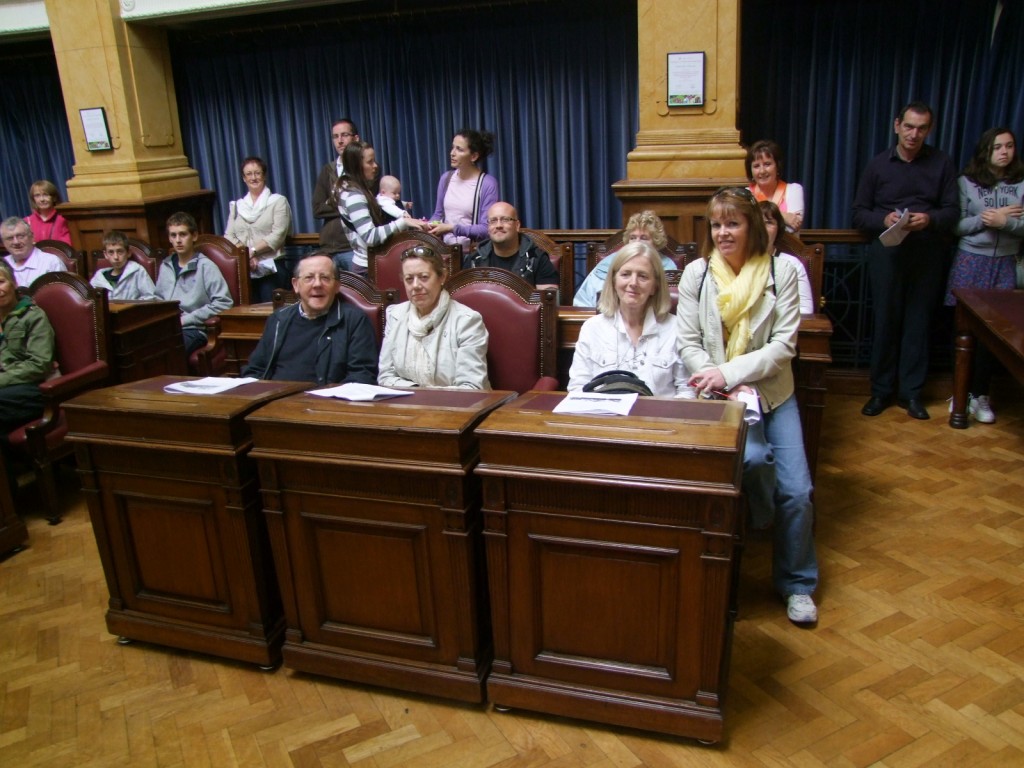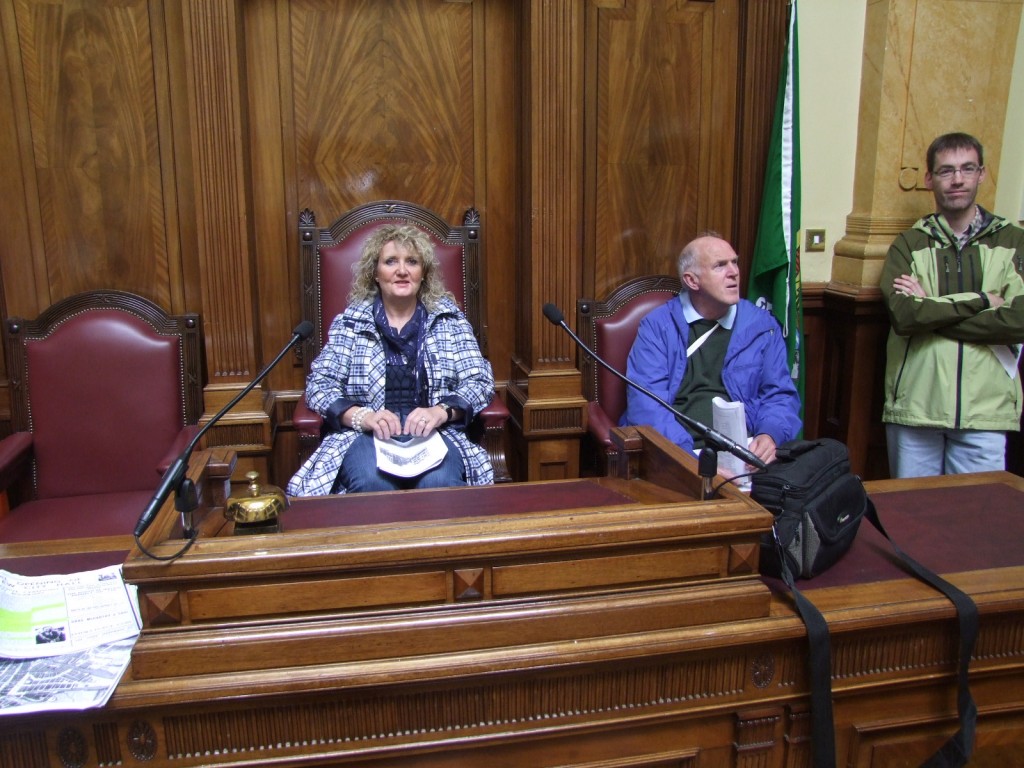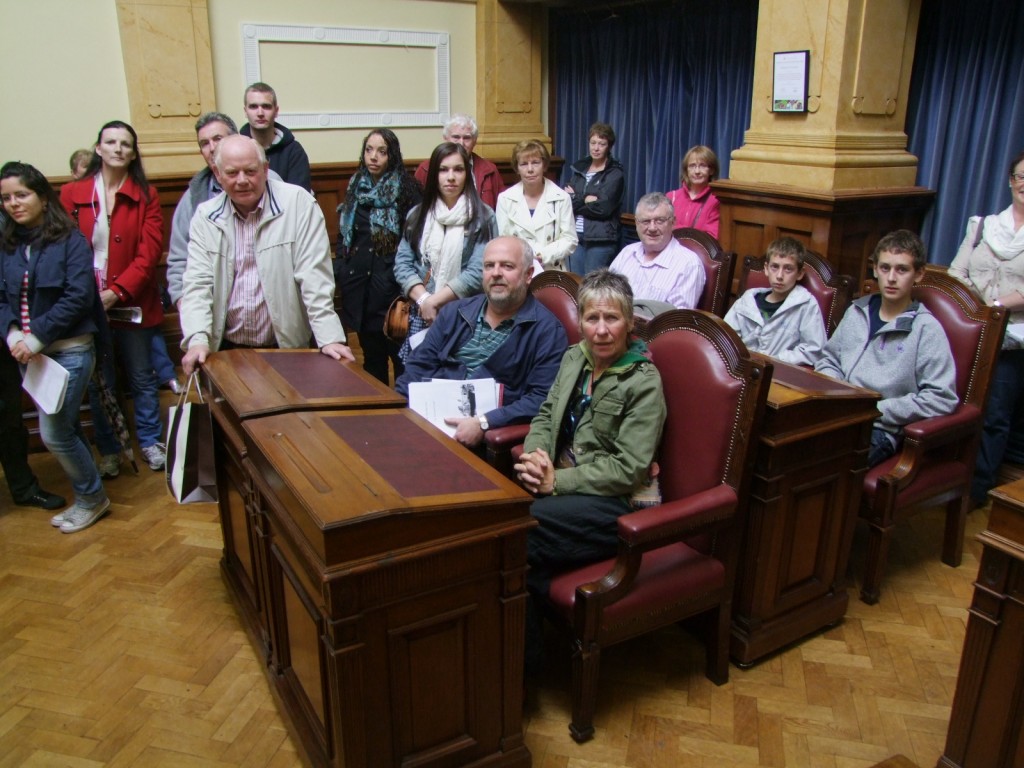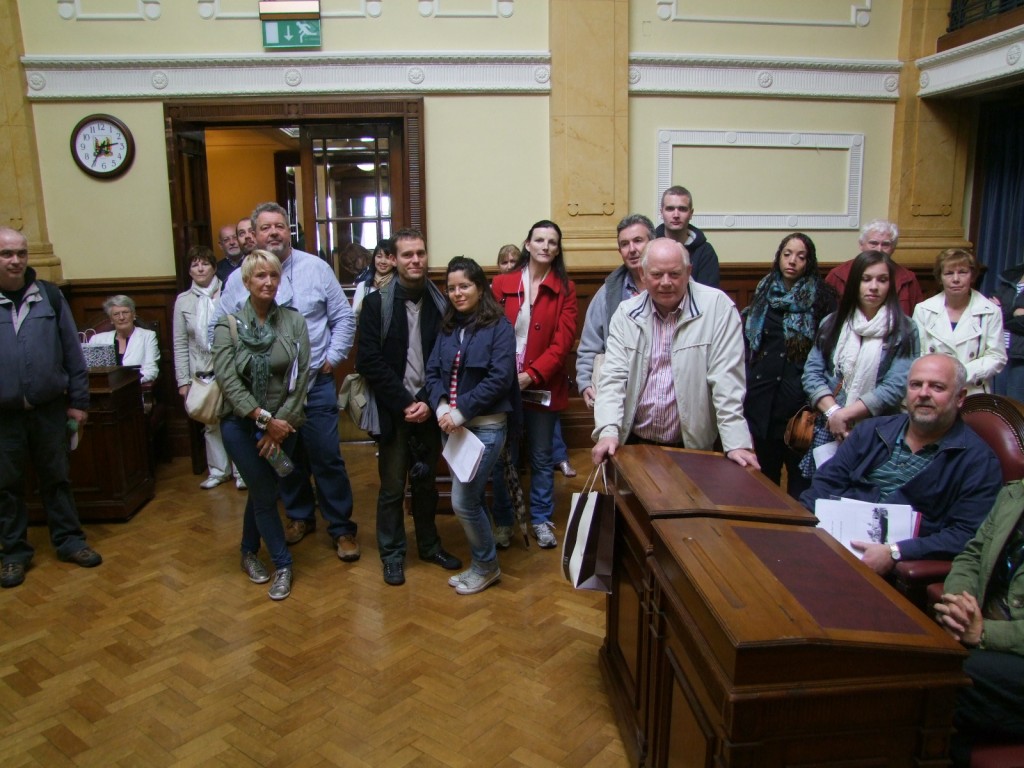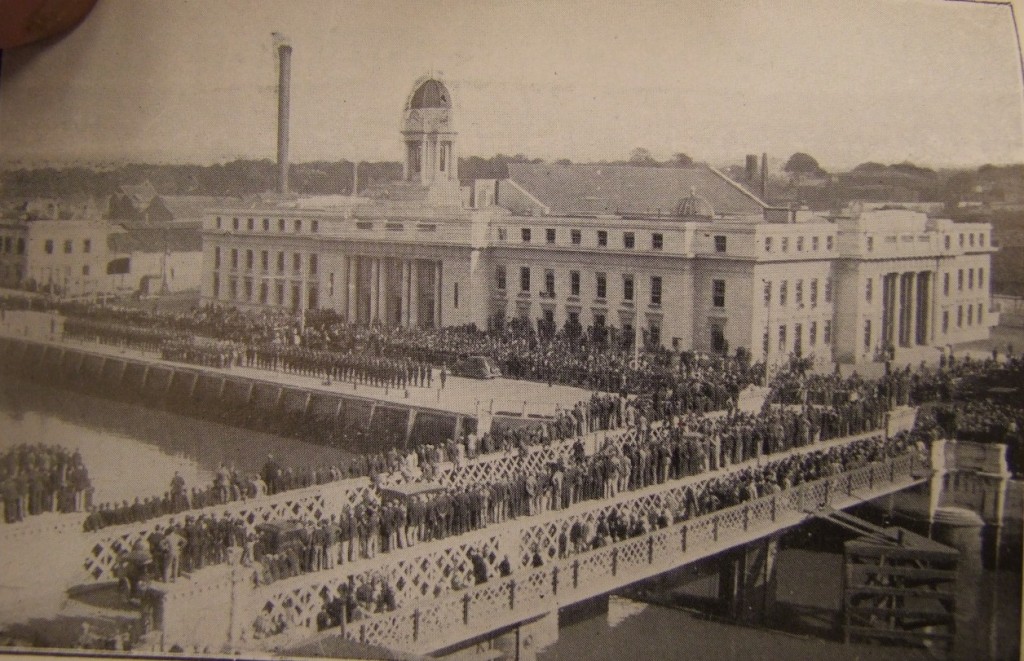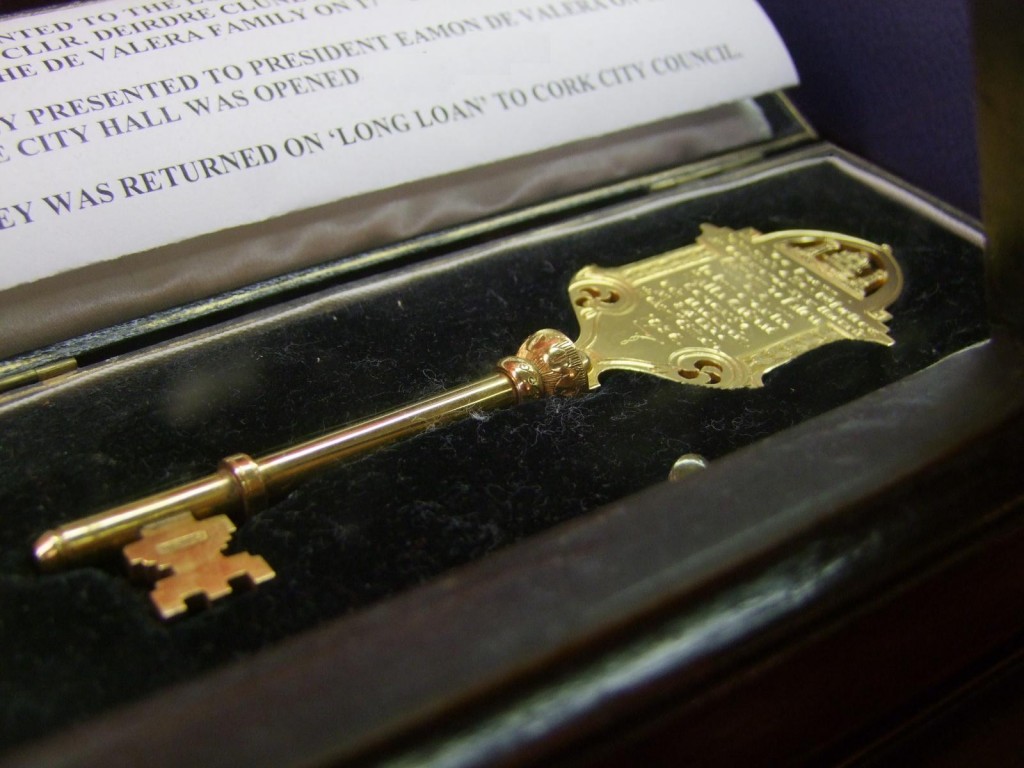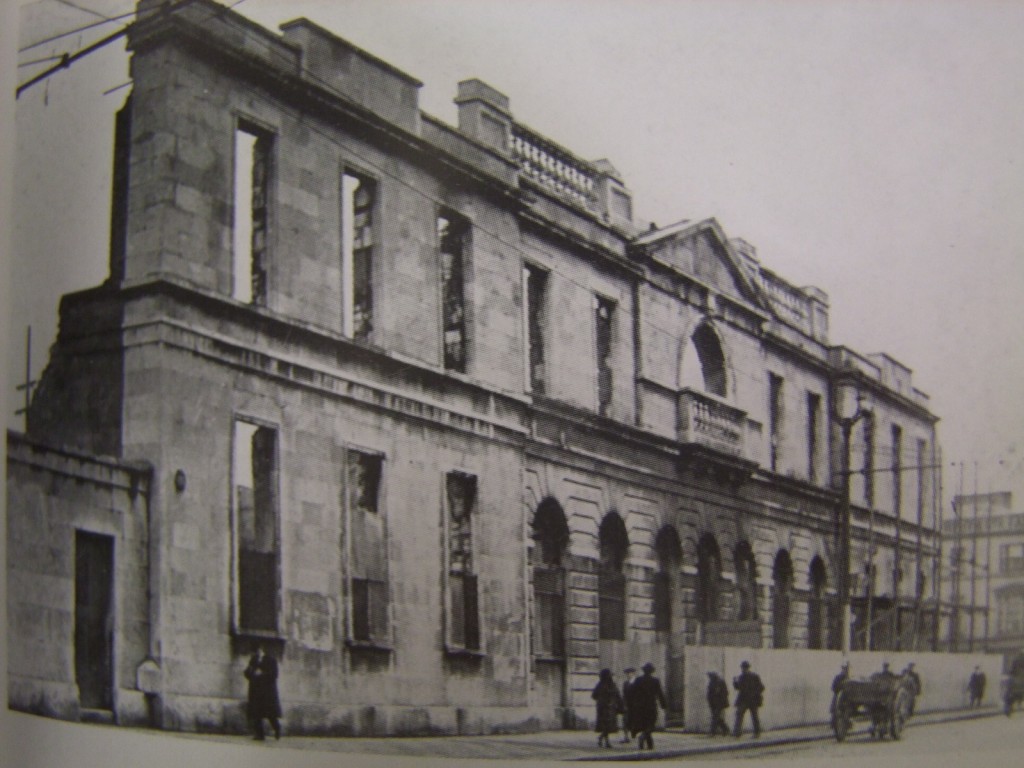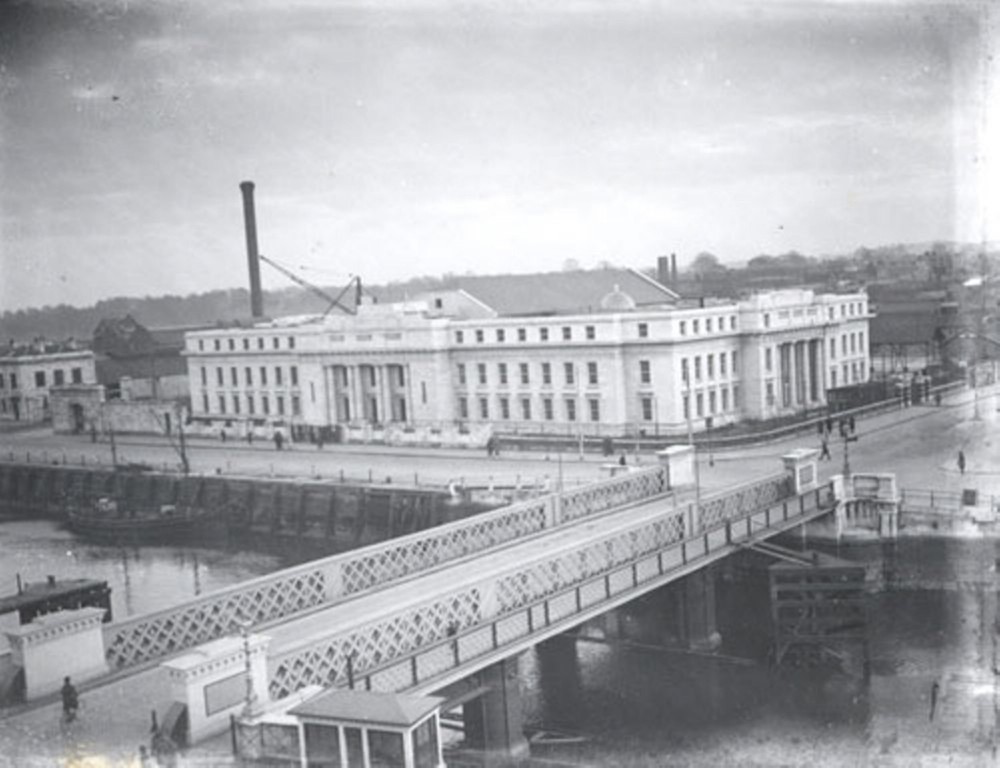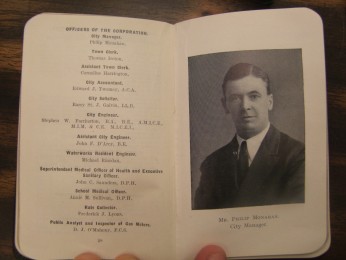
Kieran’s Our City, Our Town Article,
Cork Independent, 15 September 2011
The Fruits of Sacrifice
“The opening of the City Hall-took place at 4pm. The building was packed in the gallery and on the main floor, while the attendance overflowed into the isde and amny were unable to gain admission. When the President walked through, the gathering rose to their feet and cheered vigourously. He was preceded by the Lord Mayor of Cork and members of the Corporation, in their official robes, the Corporation in their official robes, the Chairman and members of the Cork harbour Commissioners, the visiting Mayors, and many well known citizens of Cork. It is estimated there was close on 3,000 people in the hall when the opening ceremony took place.” (Cork Examiner, 9 September, 1936)
It was in Cork City Hall’s new Concert Hall on 8 September 1936 that the Lord Mayor, Sean French introduced the speeches section at the official opening ceremony of the building in front of over 2,000 guests. He was a city merchant and was Lord Mayor of Cork from 1924 to 1929 and again from 1932 until his death in 1937. He outlined that the former City Hall building (opened 1890) had been revamped in the early years of the twentieth century and officially opened on 4 October 1906 but then fell victim to its burning in December 1920. He noted that the Corporation in contemplating a new City Hall decided to invite designs from architects living and practising in Ireland.
A large number of designs were received and the adjudicator Lucius O’Callaghan, President of the Architect’s Association of Ireland, awarded first to Messrs. Alfred Jones and Stephen Kelly, architects, of Dublin. The Irish architectural online archive noted that Alfred Jones was a man of wide interests. For the last eighteen years of his life he was engaged in compiling a biographical index of Irish architects and engineers and in transcribing relevant material from the Irish Builder and other sources to that end.
In the early 1930s, Messrs. Sisk and Sons were accepted as the builders. Established in 1859 by John Sisk, in his native Cork, it is as builders and contractors that the founder and subsequent generations have primarily built their reputation in business. As part of the City Hall project, they had to peg out 900 piles as foundations for the building to begin with. Their specially designed new offices were located on, Douglas Street, into which the Sisk firm moved into in 1933. The classical styled Cork City Hall building is faced with dressed limestone, which was quarried locally in Little Island.
When Eamonn DeValera rose in the new Concert Hall to reply to speak, he spoke first in Irish and then continued in English. He noted of the sacrifices of Tomás MacCurtain and Terence McSwiney; “They united the people in Ireland and throughout the world as they had never been united before and steeled their resolution to make good their right to govern themselves; no matter what sacrifice it might entail. The people of today are enjoying the fruits of the sacrifices they made, the Irish nation is being restored and developed, and it lies with the young people of Cork who are now growing up to see that the future is in every way worthy of the past.” Eamonn DeValera also paid tribute to Cork craftsmen plus concluded by noting; “The people of this city have clung tenaciously to their nationality with courage and hope even in the darkest hours. Surely that courage and hope will not fail them now when the dawn is at hand. In declaring this hall opened, I do so in the belief that it is a symbol of the resurrection of the Irish nation and that it will mark a new era of progress for Cork and its people.”
Shortly after Eamonn DeValera had commenced to speak, a young woman in the hall stood up and attempted to speak. She shouted “We protest” and “it is an insult”. Gardaí took the girl outside. At the conclusion of his speech another woman attempted to speak but was not heard due to the prolonged applause. She was also removed by Gardaí. Both women had attempted to voice their concerns that City Hall should not have been rebuilt until Ireland was fully united, that it was a betrayal of the memory of the two former Lord Mayors MacCurtain and McSwiney.
The article in the Cork Examiner also shows a montage of ads surrounding the news story of the official opening. These showcase the local craftsmen involved in the project. W.J. Hickey of Maylor Street, Cork, supplied approximately 2,000 tons of cement used in the construction of Cork City Hall. Barry & Co., Broad Street, Cork completed the terrazzo floors and tiling. Haughton’s Ltd., South Terrace, Cork, supplied the timber builder materials. John Buckley & Sons, Half Moon Street, Cork, provided the wrought iron balustrades. Cash & Co. Ltd, Cork, provided the Lord Mayor’s Chair, Council and Press Chairs. The Munster Arcade, Cork, furnished all the seating and carpets. J.S. McCarthy, 23 & 24 Castle Street, Cork, did all the painting and decorating. Brightside Engineering Co. (Ireland) Ltd provided the Central Heating System. Cork Iron & Hardware Co. Ltd. provided building materials such as re-inforcing bars, girders, wire, cut nails, expanding metal, sheet lead etc. The Typewriter Company (Ireland) Ltd., 28 Marlboro Street, Cork, equipped departments with Royal Typewriters. The South of Ireland Asphalt Company, Victoria Road, Cork supplied the mastic asphalt roof.
Fitzgerald & Co., 74 Grand Parade, Cork, installed the comprehensive electrical installations. The switchboard and distribution boards came from Siemens Electric Lamps and Supplies Ltd. Dublin while the three miles of steel conduit and seventeen miles of cables and twenty water heaters came from Siemens Schuckert, Dublin. Strand Electric, Covent Garden, London, supplied the stage lighting equipment for the Concert Hall. The tower clock, chimes and Master Clock was by Gillett & Johnson, Ltd. Croydon England. Research by Cork City Hall electrician John O’Sullivan in the current hall revealed that the clock was meant for an Indian palace but was bought by Philip Monahan due to its suitability for the top of Cork City Hall.
To mark the 75th anniversary of the official opening of Cork City Hall, I have a small exhibition entitled Rebuilding Cork City Hall, 1920-1936 on display till 25 September in the foyer of the new building. A second exhibition on the 1930s design and plan of Cork City Hall has been compiled by Cork City and County Archives and this is on display outside the Council Chamber.
Captions:
608a. A floodlit Cork City Hall; it was floodlit in September 1986 to mark the fiftieth anniversary of its official opening (pictures: Kieran McCarthy)
608b. Concert Hall, Cork City Hall


